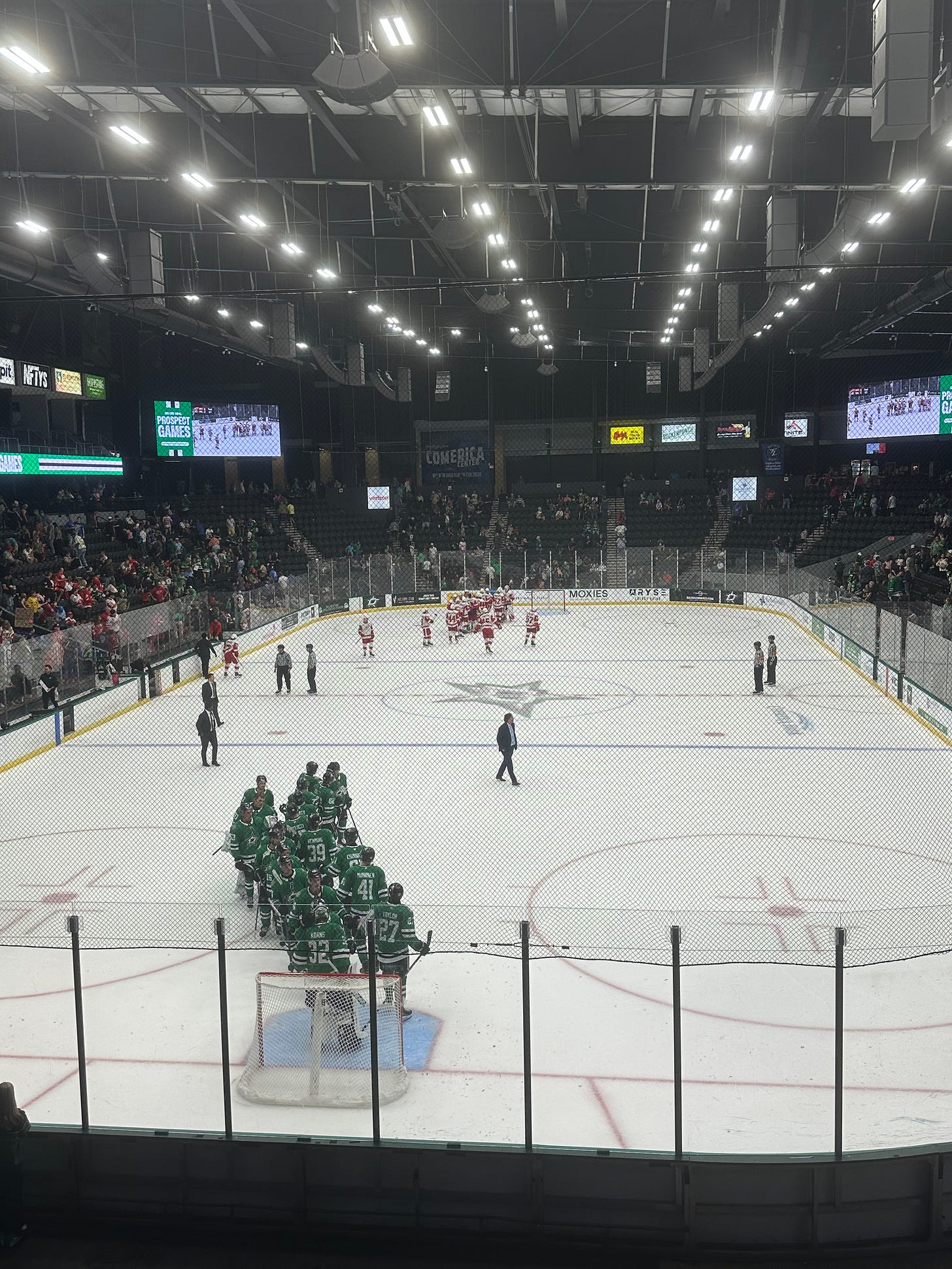Is it really a big deal to go from European to North American ice?
Let's talk about that with Red Wings prospects Axel Sandin-Pellikka and Michael Brandsegg-Nygård.
FRISCO, Texas — One of the most common questions, or at least talking points, with young European-based prospects is how well they’ll adjust to North American ice.
International ice is wider, typically closer to 100 feet, compared to the 85-foot width in the NHL. And with more space, the European game tends to be a more patient one, there’s less natural physicality and the chaos tends to be more controlled.
That chaos, we’re told, is what eats young European prospects alive. That the jump from Europe to North America will be defined by how much they can find their game when the walls of the coliseum get closer.
It’s still true, to an extent, but it’s also become a crutch, a lazy cliché used by hockey writers — this one included — when it comes to projecting prospect success.
Which is why I wanted to dive into the concept this with Detroit Red Wings prospects Axel Sandin-Pellikka and Michael Brandsegg-Nygård, who are both making the full-time jump this season from the SHL, where they were teammates with Skellefteå AIK, to the AHL.
Sandin-Pellikka and Brandsegg-Nygård both had AHL cameos in the spring, playing in five combined playoff and regular season games for the Grand Rapids Griffins, and both starred in a 6-2 demolition of the Dallas Stars prospects on Saturday night.
“I think we both got our first taste of it with those games in (Grand Rapids),” Sandin-Pellikka said. “And I think you kind of find what the challenges really are when you jump into that right away (from the SHL).”
So, what are those challenges? What actually hinders or bothers a player making that change?
“Honestly, it’s still hockey,” Brandsegg-Nygård said. “And I think if you just think about it as hockey, it’s not really an adjustment at all. We actually play on the smaller rinks in Norway, so when you’ve bounced back and forth between the two, is it really a big deal?”
If anything, Brandsegg-Nygård said he felt Sandin-Pellikka is even better on North American ice, noting that a player with Sandin-Pellikka’s puck possession and vertical passing becomes more important in the NHL-style game.
“I think I saw that in the five games (with Grand Rapids),” Sandin-Pellikka said. “You see the game, you can push the puck quicker, guys are ready for you to push the puck quicker. I think I’m smart enough with my transitions, can kind of take that space that other players aren’t ready for a (defenseman) to take.”
It’s something that stood out to me about Sandin-Pellikka’s game against the Stars prospects, how often the Red Wings defender took and seized space, creating gaps for himself and others.
“He makes it easy for you,” Shai Buium said. “He makes you a better player, and you can see how he’s thought ahead, where the play is going to go.”
One thing Sandin-Pellikka said he had to figure out spatially was how quickly the second player arrives for rebounds in North America. In Europe, with a wider rink, there’s extra strides required for a player to make it from the wall to the net front. In the NHL, elite players can cover that ground in a stride or two.
“You have to remember that, that help is always coming for the offense,” Sandin-Pellikka said. “So you have to use your space and leverage right away, because a second forward will be on you quick.”
Against the Stars prospects, Sandin-Pellikka thrived. Now it’s one thing to do that against an overmatched prospect team — the roster for Dallas is pretty thin here — it’s another to do it in training camp and NHL preseason, where Sandin-Pellikka is hoping to prove he at least deserves an NHL opportunity.
“I want to make the NHL team, I want to prove that and go in and take a job,” Sandin-Pellikka said. “I think that’s kind of how I have to think, that’s how you take the next step.”



Another point of adjustment is the change in immediate anticipation of puck movement, and where it will be, and the correct or fastest angle to retrieve it. Whoever anticipated the correct fastest path to the puck has the advantage over others, even if they are faster skaters. Anticipation is ingrained and learned over thousands of repetitions. Relearning that takes time.